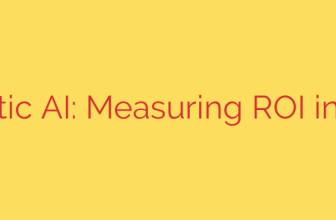
ESG and the Modern Data Center: A Guide for Visionary Leaders
In today’s digital-first economy, data centers are the invisible engines powering our world. Yet, their significant environmental footprint and societal impact are coming under intense scrutiny. For today’s visionary leaders, integrating Environmental, Social, and Governance (ESG) principles into data center strategy is no longer a choice but a strategic imperative.
Moving beyond simple compliance, a robust ESG framework drives innovation, mitigates risk, attracts investment, and builds a resilient brand trusted by customers and stakeholders alike. This guide breaks down the core components of ESG for data center leadership, providing a clear roadmap for building a more sustainable and responsible digital future.
The ‘E’ in ESG: Redefining Environmental Performance
The environmental impact of data centers is the most visible aspect of their ESG profile. While metrics like Power Usage Effectiveness (PUE) were a good starting point, true environmental stewardship requires a more holistic approach.
- Energy Efficiency and Renewable Sources: The primary focus must be on reducing energy consumption and transitioning to clean power. Leaders should prioritize sourcing 100% renewable energy through Power Purchase Agreements (PPAs), on-site generation like solar panels, and partnerships with green energy providers. This goes hand-in-hand with optimizing cooling systems, upgrading to more efficient hardware, and utilizing AI-powered management tools to minimize wasted energy.
- Water Conservation and Management: Data centers, particularly those using evaporative cooling, can consume vast amounts of water. Implementing a strong Water Usage Effectiveness (WUE) program is critical. This involves investing in closed-loop cooling systems, exploring liquid cooling technologies, and using recycled or non-potable water sources where feasible to reduce the strain on local water supplies.
- Circular Economy and E-Waste: The lifecycle of IT hardware presents a major environmental challenge. A forward-thinking strategy embraces the circular economy. This means prioritizing hardware life extension, refurbishment, and responsible e-waste recycling. Partnering with certified recyclers and designing facilities for modular upgrades can significantly reduce waste and create long-term value.
The ‘S’ in ESG: The Social Impact of Your Digital Infrastructure
The social pillar of ESG focuses on how a company’s operations affect its employees, customers, and the communities it operates in. For data centers, this means looking beyond the facility’s walls.
- Health, Safety, and Employee Well-being: The foundation of social responsibility is ensuring a safe and supportive workplace. This includes rigorous safety protocols for all on-site personnel, fair labor practices, and investing in continuous training and career development. A culture that prioritizes its people is more innovative and resilient.
- Diversity, Equity, and Inclusion (DEI): The technology sector has a clear mandate to build a more inclusive workforce. Actively promoting DEI within your organization and your supply chain is not just an ethical obligation but a competitive advantage. Diverse teams are proven to be more innovative and better at problem-solving.
- Community Engagement and Data Ethics: Data centers should be good neighbors. This can involve creating local jobs, supporting community initiatives, and operating transparently. Critically, the “Social” pillar also covers the ethical handling of data. Upholding the highest standards of data privacy and security is a fundamental social responsibility to the customers and individuals whose information you protect.
The ‘G’ in ESG: Governance and Transparent Leadership
Strong governance is the framework that holds the entire ESG strategy together. It ensures accountability, transparency, and ethical conduct from the top down.
- Transparent and Accurate Reporting: Stakeholders, from investors to customers, demand transparency. Companies must commit to measuring and publicly reporting on key ESG metrics using established frameworks like the Global Reporting Initiative (GRI) or the Sustainability Accounting Standards Board (SASB). This builds trust and demonstrates a genuine commitment to progress.
- Board-Level Oversight and Risk Management: ESG cannot be delegated to a single department; it must be embedded in corporate strategy. The board of directors should have direct oversight of the ESG strategy, treating it as a core component of long-term risk management and value creation.
- Ethical Supply Chain Management: Your ESG commitment extends to your partners. It is essential to conduct due diligence on suppliers to ensure they also adhere to high environmental and ethical standards. A sustainable data center cannot be built on an irresponsible supply chain.
A Strategic Roadmap for Implementation
Embedding ESG into your data center operations requires a clear and deliberate plan. Here are five actionable steps for leadership teams:
- Establish a Baseline: You cannot improve what you don’t measure. Conduct a comprehensive audit of your current energy consumption, carbon footprint, water usage, waste production, and social metrics.
- Set Ambitious, Measurable Goals: Use your baseline to set specific, science-based targets. For example, aim to achieve net-zero emissions by a certain date, reduce your PUE to an industry-leading figure, or achieve a specific diversity target in your workforce.
- Integrate ESG Across the Business: Weave ESG criteria into every facet of the organization, from procurement and operations to finance and human resources. This ensures that decisions at all levels are aligned with your sustainability goals.
- Empower Your Team: Foster a culture of sustainability where every employee understands their role. Provide the training, resources, and encouragement needed for teams to innovate and contribute to ESG initiatives.
- Communicate and Report Progress: Be transparent about your journey. Regularly communicate your progress—including both successes and challenges—to all stakeholders. This accountability is key to maintaining momentum and building credibility.
Ultimately, ESG is not a cost center; it is an investment in a more efficient, resilient, and reputable future. For data center leaders, embracing this framework is essential for navigating the challenges of tomorrow and securing a sustainable competitive advantage.
Source: https://www.datacenters.com/news/the-esg-impact-of-data-center-developments-and-what-ceos-must-watch








